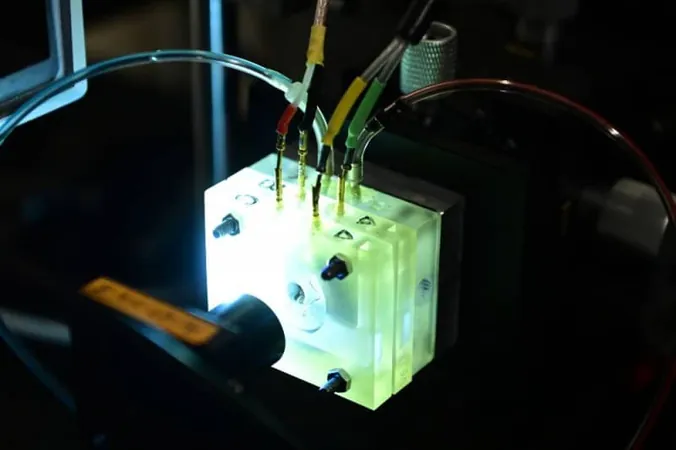
Revolutionary Discovery Unveils the Secrets of Hearing in Mammals
2025-09-11
Author: Arjun
Groundbreaking Research Changes Our Understanding of Hearing
In a stunning breakthrough for neuroscience, Dr. A. James Hudspeth and his team at The Rockefeller University have managed to keep a segment of the mammalian cochlea alive outside the body. This pioneering work provides unprecedented insights into the biomechanics of hearing, confirming a crucial principle that applies to auditory functions across various species.
Real-Time Observations Open New Doors
By developing an innovative device that maintains cochlear tissue in a life-sustaining environment, the researchers captured the intricate mechanics of hair cells—tiny sensory receptors. Their experiments shed light on hair cell sensitivity, sound amplification, and the critical role of the Hopf bifurcation, a biophysical tipping point essential for effective hearing.
A Game-Changer for Hearing Loss Treatments
With this revolutionary method, the team not only displayed the cochlea's remarkable agility in processing sound but also laid the groundwork for potential therapies to combat sensorineural hearing loss. This opens exciting avenues for targeted drug testing, aiming to reverse or mitigate hearing impairments.
Unveiling the Mechanics Behind a Marvel
Despite the cochlea's extraordinary design, its inner workings have remained elusive due to its fragility locked within dense bone structures. The research conducted on gerbils—whose auditory ranges mirror those of humans—allowed scientists to slice a minuscule piece of cochlea for detailed observation, focusing on the portion responsible for mid-range frequencies.
The Fascinating Role of the Hopf Bifurcation
Hudspeth and his collaborators had previously identified the Hopf bifurcation in non-mammalian species, yet its existence in mammals was hotly debated. Through meticulous and sophisticated experimentation, the team affirmed that this critical instability exists within the mammalian cochlea, confirming its role in amplifying faint sound signals.
Implications for Future Research and Therapy
The ability to observe living cochlear mechanics in real-time opens a plethora of possibilities for understanding hearing mechanisms. Researchers are eager to manipulate the ex vivo cochlea for targeted pharmacological experiments, potentially leading to the first effective treatments for sensorineural hearing loss, an area desperately lacking pharmaceutical solutions.
A Legacy Realized
As researchers reflect on this monumental achievement, they recognize it as the culmination of Hudspeth's decades-long pursuit of knowledge surrounding auditory functions. This landmark study not only honors his remarkable career but also promises to enhance our understanding of hearing and improve future therapeutic strategies.


 Brasil (PT)
Brasil (PT)
 Canada (EN)
Canada (EN)
 Chile (ES)
Chile (ES)
 Česko (CS)
Česko (CS)
 대한민국 (KO)
대한민국 (KO)
 España (ES)
España (ES)
 France (FR)
France (FR)
 Hong Kong (EN)
Hong Kong (EN)
 Italia (IT)
Italia (IT)
 日本 (JA)
日本 (JA)
 Magyarország (HU)
Magyarország (HU)
 Norge (NO)
Norge (NO)
 Polska (PL)
Polska (PL)
 Schweiz (DE)
Schweiz (DE)
 Singapore (EN)
Singapore (EN)
 Sverige (SV)
Sverige (SV)
 Suomi (FI)
Suomi (FI)
 Türkiye (TR)
Türkiye (TR)
 الإمارات العربية المتحدة (AR)
الإمارات العربية المتحدة (AR)